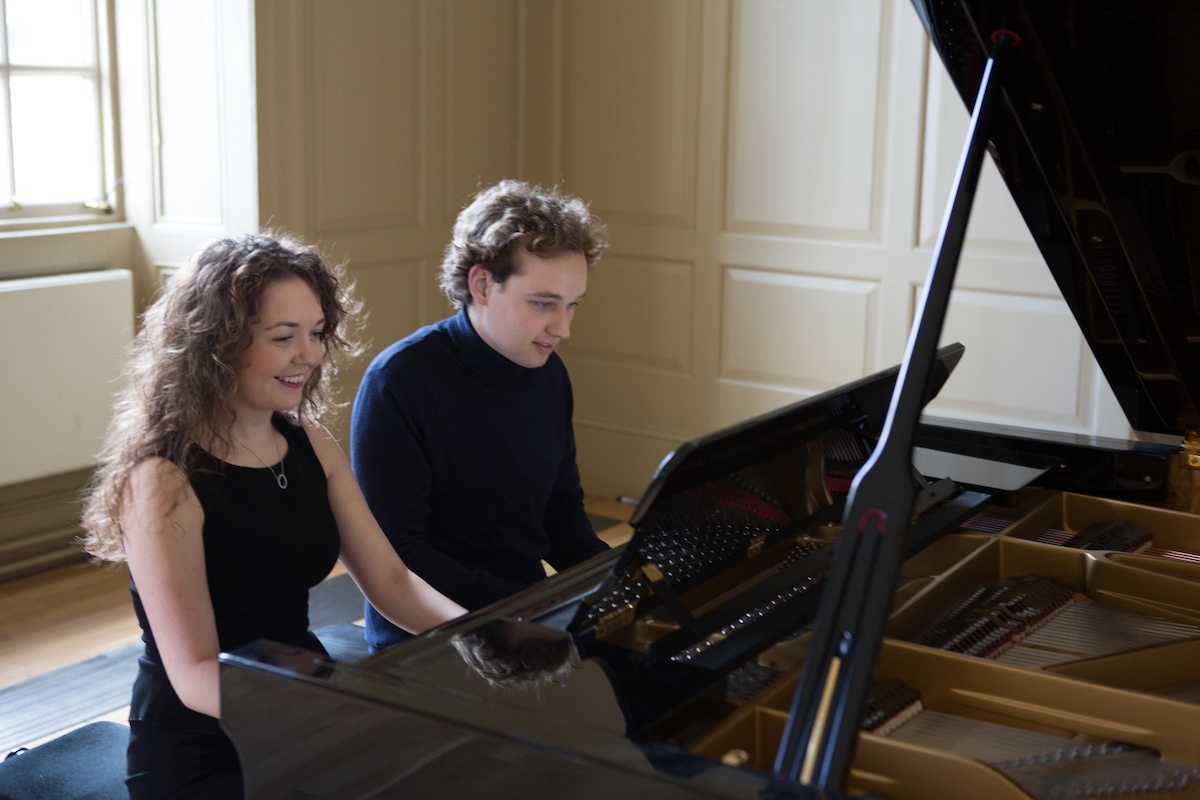.jpg)
How to build sight singing into your teaching

BY: Vanessa Heine
25 February 2019
As well as being one of four choices in the new Trinity Singing 2018-2021 syllabus, sight singing is an important part of learning to sing, whether your students want to take a graded music exam or not. There is also a real-world relevance to sight singing as it is an essential part of being able to sing with an ensemble, in a choir or as a session singer or soloist.
In this article, Vanessa Heine, professional opera, choral, session singer and workshop leader, explores strategies for integrating sight singing into teaching and shares some of her favourite choices of repertoire through which to explore it.
Why does sight singing matter?
There are many reasons why sight singing is important. It can support students with pitch, singing in tune, to understand the relevance of their own part in relation to the chords or to other parts, and help them to be better able to sing with others.
Many professional singing scenarios require the ability to sing at sight. For example, session singers need to be able to grasp music very quickly, record a performance and then leave. There just isn’t time for preparation or to learn the song by ear first. In fact, singers who can sight sing are often more likely to get work than those who can’t, such is its importance, particularly in the professional world of classical singing and performing.
For solo singers, too, it is useful. If there is no piano available, being able to look at the music and make judgments about the appropriateness for your voice, for example in terms of the range or construction of melodic lines, can save a lot of time when choosing repertoire.
In the rock and pop world, whilst singers often know the music from hearing it, session singers may need to sing backing vocals, or pick up aspects of the score – that happens far quicker if they are able to read and perform at sight.
Exercises to try with the Trinity Singing 2018-2021 syllabus
So how is it best to incorporate sight singing into the singing lesson and avoid the situation where it is tagged onto the end of a lesson? How do we prevent it merely being tied to exam requirements, then forgotten again until the next exam is looming?
As many singing teachers are also singers, the best way is to sing together. Starting with something simple, such as singing in 3rds or some call and response, these low-pressure situations help students get used to singing at sight in preparation for exams.
There are some great pieces of music in the Trinity Singing 2018-201 syllabus that help support and develop many areas of singing through sight singing together.
Folk songs from Initial grade, for example ‘Winter’, ‘Albatross Flying So High’ and ‘Sur le Pont d’Avignon’ are useful for practising singing in another language. If the student enjoys musical theatre, then ‘Marry the Man Today’ from Guys and Dolls can be sung as a duet. In the Rock & Pop Vocals syllabus, ‘Nothing Compares 2 U’ lends itself well to sight singing through call and response.
Pieces to try beyond Trinity
Away from the syllabuses, for female voices, Monteverdi’s ‘Pur Ti Miro’ has sections where the voices echo each other then sing together, giving the student chance to hear the melody first before copying.
This is very similar in approach to the playback option in the Rock & Pop Vocals syllabus where listening and copying while following the music forms part of the exam performance.
A useful strategy is to help students develop an awareness of other parts, and that essential understanding of where their part is in relation to the chords. Giving them a phrase to sing at sight, perhaps accompanied only by chords on the piano or by a second voice, gives the activity a musical context. Stopping at various points to ask ‘does that sound right? Why not?’ helps students get used to hearing whether they are in tune or how to relate their part to others for help if they get lost.
Another great activity to use involves improvising. As well as being an option in the Rock & Pop Vocals syllabus as a choice from two ‘session skills’ activities, improvising is great for helping students develop and deliver their own personal performance of a song.
With rock and pop songs, as students often already know the song, it’s easy to copy a performance they have heard, including licks or embellishments of the melody that were originally improvised by the artist. Singing the song in a contrasting style, such as performing a David Bowie song as a ballad or encouraging students’ own improvisations around the melody, can be great teaching and learning opportunities. It also ensures they explore the song in musical ways before committing to their own performance.
Growing as a musician
Being able to sight sing helps move students away from just copying performances and into developing their own sense of style and musicianship. There are often added markings and musical guidance in the score that can’t always be heard in a recording. One crucial skill is being able to look at a score and quickly work out where it is best to breathe, while still keeping the performance musical. Of course, also seeing the words and quickly establishing an understanding of the meaning and intentions of the music can be enhanced by improving sight singing.
In essence, the real value of being able to sight sing is that the quicker you can react to the words, rhythm and music, the better musician you will be. There’s no reason that even if you don’t choose sight singing as an option for an exam, that sight singing can’t become an integral part of any singing lesson.





Comments & Replies